EPYPHYTIC TESSELLATIONS
ABSTRACT
As we move into the anthropogenic age, it is indispensable to look for solutions in nature and learn from them rather than exploit the little that we have left. With climate change slowly turning our cities into deserts, we are in desperate need for bio receptive architecture embedded with water storage and absorption strategies. Cacti are a great paradigms of how a plant water management mechanism could help adapt to drought and arid conditions. Epiphytic Tessellations aims at developing an architecturally applicable biocompatible paneling system that enables the growth of plants, but one that’s also has the potential to store water and serve as a cooling system, while assisting at oxygen production. This is accomplished by the integration of Epiphytes into architectural wall systems. The components are generated by digitally depositing mixtures of the super absorbent Sodium Polyacrylate with graded fibrosity guided by the structure of the desired tessellated geometries. The geometries designs are digitally developed based on the kind of Epiphytic plant it holds; be it a pendant or pot-in epiphyte. This approach explores the capacity of the units to absorb water and serve as a root system for epiphytic plants. Deploying this wall paneling system in the ventilation shafts of buildings can serve as an ecological lifeline to our cities, especially those with tremendous heat.
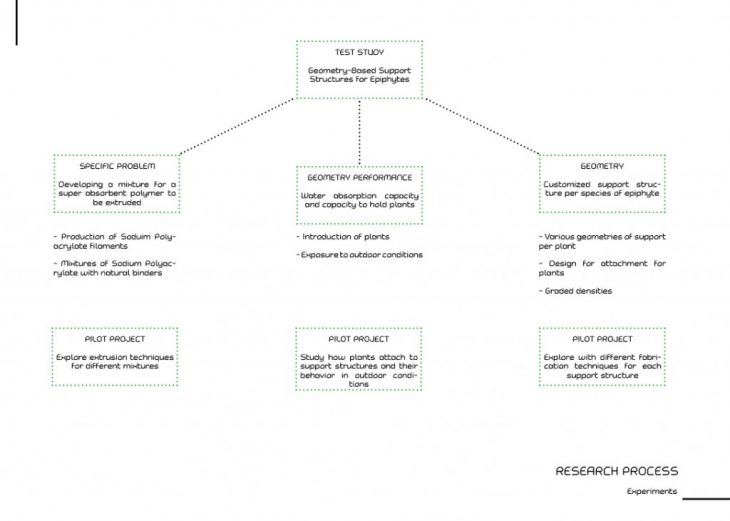
Epiphytic Tessellations aims at exploring the use of acry-polymer gels to develop a sustainable water absorption and storage facade system for buildings, on which plants can grow. The system is designed with the help of digital optimization and additive manufacturing to generate a plant specific support system with graded fibrosity, guided by the requirements of the of the plants.
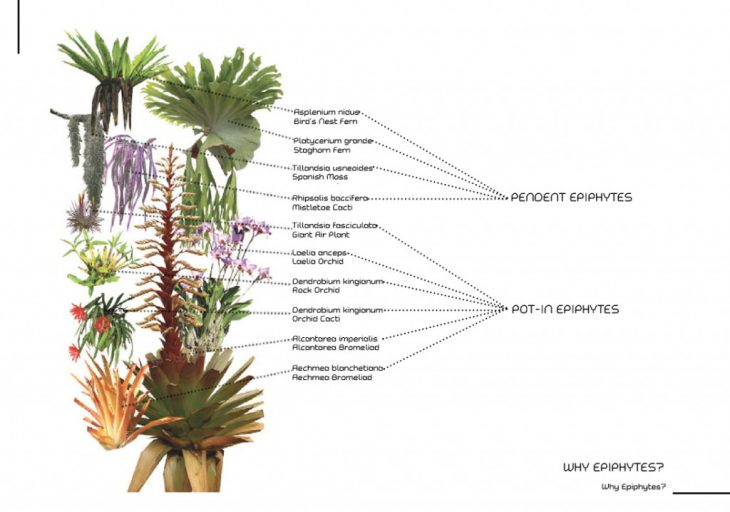
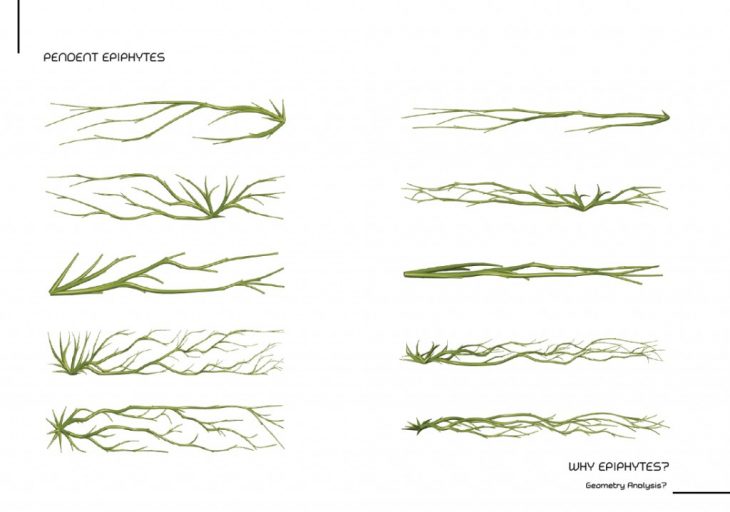
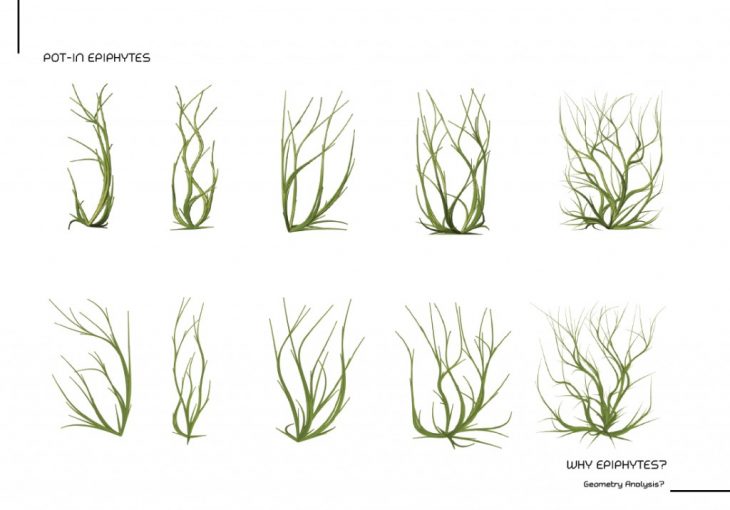 The initial experimentation with the combination of the super absorbent; sodium polyacrylate, with natural binders allows to create a water absorbent structure that can serve as a host to different epiphytic plants along with the study of the behavior and growth of each of the species of epiphytes, allows for the understanding of the form of the structure that would be required to hold each plant. Followed by the use of computational software to optimize the height- based distribution of solar radiation of along the facades of shafts, assists at portraying the location at which each plant should be placed, as different species of plants require different amounts of humidity and solar radiation. The eventual use of digital fabrication allows to design a facade system that is specific to each shaft and each species of epiphytic plant that would later reside within. An application of the prototype version of Epiphytic Tessellations in an exposed environment would allow to collect data on the material and plant behavior within a shaft. Along with the records on humidity levels and air purity simultaneously, would prove whether the system is a solid solution to immense heat and air quality in arid regions of the world.
The initial experimentation with the combination of the super absorbent; sodium polyacrylate, with natural binders allows to create a water absorbent structure that can serve as a host to different epiphytic plants along with the study of the behavior and growth of each of the species of epiphytes, allows for the understanding of the form of the structure that would be required to hold each plant. Followed by the use of computational software to optimize the height- based distribution of solar radiation of along the facades of shafts, assists at portraying the location at which each plant should be placed, as different species of plants require different amounts of humidity and solar radiation. The eventual use of digital fabrication allows to design a facade system that is specific to each shaft and each species of epiphytic plant that would later reside within. An application of the prototype version of Epiphytic Tessellations in an exposed environment would allow to collect data on the material and plant behavior within a shaft. Along with the records on humidity levels and air purity simultaneously, would prove whether the system is a solid solution to immense heat and air quality in arid regions of the world.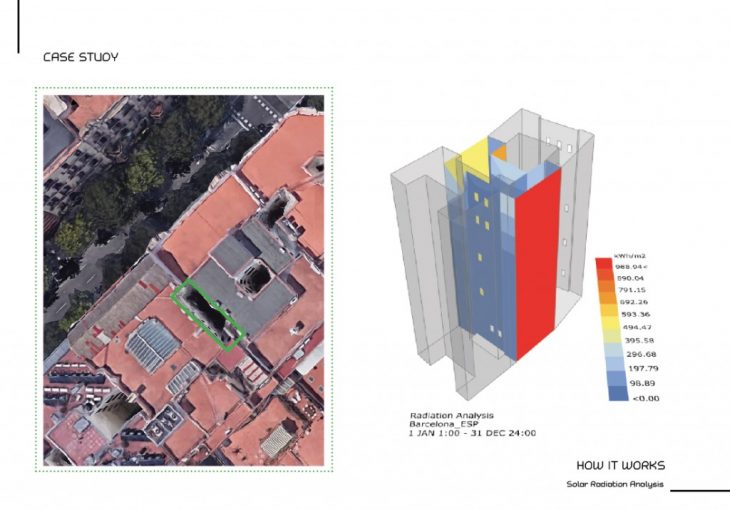
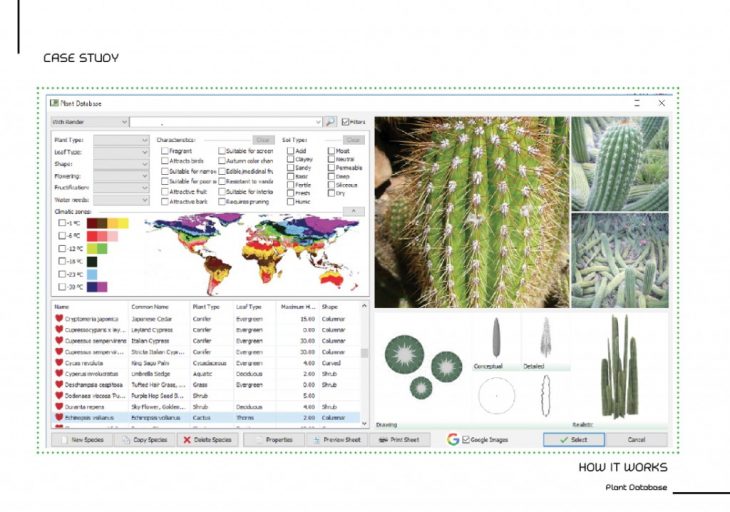
This thesis discusses the emphasizes on water absorption and storage strategies of cactus and provides the experimental database required to develop a biomimetic water management device that could be used on building facades and specifically in shafts where heat island effect exists; as the placement within shafts proves a greater impact in cities. The purpose is not exclusively to develop a bio-compatible system that allows for the growth of plants, but one that is optimized to shafts in cities, with the potential to store water and serve as a cooling system, while replenishing our lungs.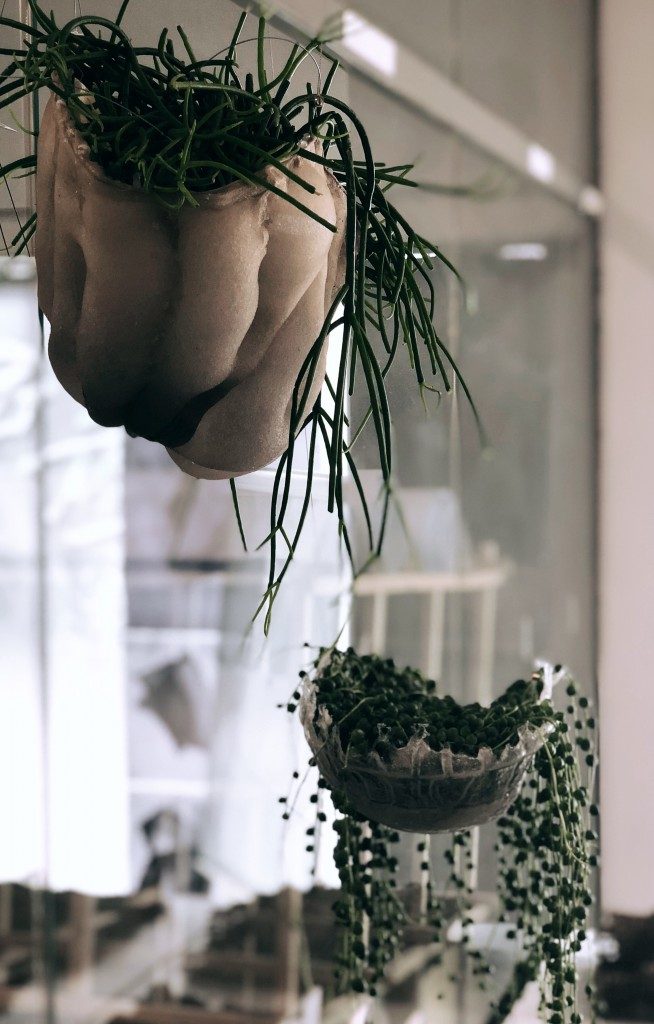
Epiphytic Tessellations | Computational Workflow is a project of IaaC, Institute for Advanced Architecture of Catalonia.
Developed at Master in Advanced Architecture, in 2017/2018 by Antoinette El Chidiac
Tutor: Rodrigo Aguirre
Seminar Workshop 3 – Digital Tools | Computation Introductory